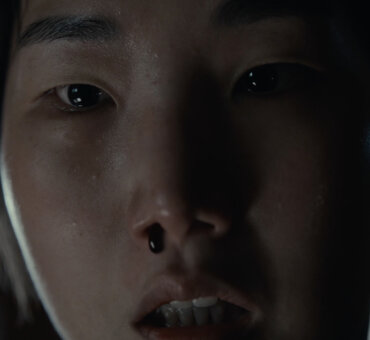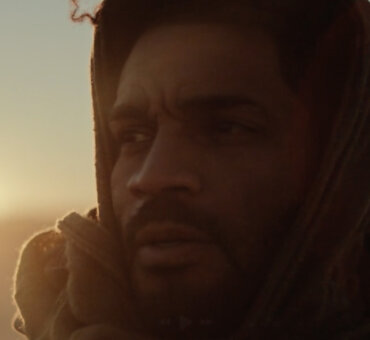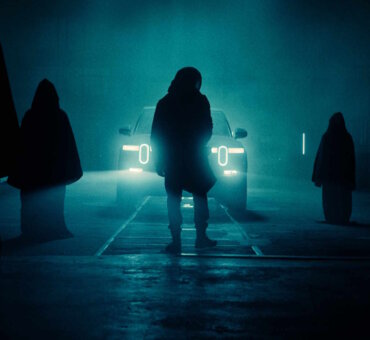The director/DP relationship requires constant attention. Two hands on the wheel. If you let go for even a second, this lack of communication can become your worst enemy, veering an efficient production straight into the wasteland of reshoots and hurt feelings. If properly addressed, your film becomes a well-oiled machine. Just ask DP Natalie Kingston. She’s seen the good, bad, and ugly of this relationship — which inevitably impacts every department.
“It’s a marriage and a huge collaboration. Ideally, we’re inventing this language together,” Natalie told us. “It’s important that we’re in-sync so we’re not making two different movies.”
During her lighting workshop at Film + Music Conference, Natalie briefly addressed the art of developing this visual language and maintaining a good on-set relationship. We wanted to dig into this idea a little deeper, so we caught up with her in the middle of a shoot in Southern Louisiana. She shared some insight on the importance of a shared visual language, and how to develop it, against the backdrop of her latest project.
Filmsupply: You’re in the middle of a production, right?
Natalie Kingston: I’m currently in Breaux Bridge, shooting a feature called Lost Bayouin the swamps of southern Louisiana. We’re about to start week three tomorrow. It’s a little cold and rainy today, but I’ve been consumed with this project for a while now, so I’m used to being in this world. Being immersed in this environment — the Atchafalaya Basin — has been inspiring, just seeing the sunsets around here. Plus, our main location is on a houseboat, so that’s pretty incredible.
What initially drew you to being a DP?
I’ve almost always known I wanted to do something in the medium, but not necessarily cinematography. I grew up in a town called New Iberia, Louisiana, in the ‘90s and my parents bought a VHS camera when I was about 10. I just became infatuated with making little movies in the backyard, and the idea of doing that for a living. It’s something that stuck with me and just never left.
I went to college at UL Lafayette, and they didn’t have a film program at the time, so the closest I could get was broadcast mass communications. Shortly after school, I started working for a small-town TV station, with like ten employees. Maybe less. So that’s where I cut my teeth telling stories with a camera. I got to be in charge of this show that I shot, edited, produced, directed, wrote — I did everything. I did that for a couple of years, and I see that as my film school. After that, I worked as a camera assistant, spent some time as an assistant editor until they couldn’t afford to pay me anymore [laughs]. Then I decided to pursue this DP thing and get serious about it. I decided I would never AC again, so I put my eye on the prize and started shooting.
Was there ever a time you wanted to give up filmmaking?
There are very hard times in this industry, but I never thought I’d give it up entirely. There have been those projects, specifically one I shot last year, where everything went wrong. I didn’t have time with the director, and we didn’t have time to develop that visual language and game plan for everything. It was just one of those horrible sets, and everything went wrong. I started to question things. Why am I doing this? It took me some time to realize the value of what I went through, but I learned a ton, not really about cinematography, but everything else. The politics on set, the stress, and what you can do to keep focused.
At Film + Music Conference you mentioned developing that on-set relationship. What’s your process?
Everyone’s approach is different, but I’m really into digging deep with a director. I’m a big “why” person. Approaching it from that perspective is important to me, and the director needs to justify why they’re doing something. Why are we panning the camera? Is it necessary to bring out this technocrane? It adds a lot of responsibility for me, but ultimately that’s my job, and if I’m not doing my job then the film doesn’t translate to an audience. That’s everything.
Can it be difficult to have that discussion with the director?
It’s an ever-evolving process. Up until last year, it wasn’t a clear process for me to get those answers. It was just me asking a shitload of questions, which I still do, but it’s more intentional now. My husband [director Brian Richard] and I collaborate a lot together; we have for about six years now. During the prep for this shoot, which happened last year, he said he wanted to break down each scene with me and develop a list of questions so we could both get in the right perspective:
What are we trying to say in this scene?
Whose perspective are we filming from?
Is the scene objective or subjective, or does it alternate back and forth?
Is there a symbolic meaning in the scene?
So we started with these questions and broke down the entire script, shot by shot, while asking ourselves these questions. It was mind-blowing when all was said and done. When you ask these questions, the answers tell you how to shoot everything. It becomes apparent where the camera should be, what your focal length should be, and whether or not you need to move the camera.
Do you have an example?
Sure, here’s one from the shoot I’m on now.Scene 38, exterior. Basin. Day.
What are we trying to say?
Gal, one of our main characters, is experiencing regret and guilt. Pop, another main character, feels like he may never see Gal again.
Whose perspective are we in? Is it subject or objective?
It’s a split perspective. We’re objective at the beginning; then we’re subjective with each Gal and Pop.
How do we do that?
This scene is all about letting go. So we’ll use distance, an awkwardness between two characters through composition. This is our ‘all is lost’ moment.This has a lot to do with focal length. Part of our specific visual language for Lost Bayou is erring on the wider side of the spectrum. For the last two weeks, we’ve used the 25mm and 40mm lenses almost exclusively. This is a very character-driven film, so we thought using the wider focal length and getting closer to our characters would give the audience a sense of being with them and create a sense of empathy. That’s a huge theme for this film, so it’s critical to create empathy. For this particular scene, I could see creating blocking with Gal and Pop, creating that physical separation. Maybe put them on the edges of the frame, where it’s a little awkward, and they’re each on a different page. And they’re torn. Showing that difference in the composition is something that we’ll probably do.
Why does it matter that the DP and the director have a shared visual language?
It’s a marriage and a huge collaboration. Ideally, we’re inventing this language together. It’s important that we’re in-sync so we’re not making two different movies. Plus, if we’re on the same page, I can communicate effectively to my other collaborators — my gaffers, camera assistants, production designers, costume designers. Everyone needs to be telling the same story. It’s not about me dictating; it’s just about opening up collaboration. In this production, we sat down with the production and costume designers to talk about color palette, texture, lights, etc. It’s been incredible to see them do their homework and watch it unfold on set. Everyone is creating from a deep, emotional place and it’s all being informed by the story.
What advice would you give to a director on working with a DP?
It’s important for a director to understand what a DP’s sensibilities are and look at their past work. Understand what their tastes are because a DP is going to bring that to the table inherently. I can’t give you anything other than myself and what I do — of course, applied to the world that the director is trying to create. Before even hiring someone, ask them a ton of questions about themselves. What kind of films they like. What directors they like. What kind of art they are drawn to. The visual language is everything. If you can’t create that in tandem, then things won’t work. The more we can hang out, look at art, watch movies, talk about the script, the more we have to fall back on when we’re on the front lines together.
On the other side, you have to know what you want to say. The worst thing in the world is working with a director who doesn’t have a clear vision. My favorite thing is working with visionaries who inspire me. If you can’t inspire me as a filmmaker, then I can’t contribute my best work. Know what you want to say. Have ideas, but still be open to collaboration. I’m interested in exploring the emotionality of scenes, and being in sync with the director helps me do that. I think the medium of film is arguably the most powerful way to create empathy. That resonated with me as a human being. That idea of empathy and relating to our fellow humans on this earth, while we’re all here together. To be able to work in a medium that allows me to, perhaps, evoke empathy from an audience or a character that might remind them of someone in their life is extremely powerful. That’s what keeps me going.






